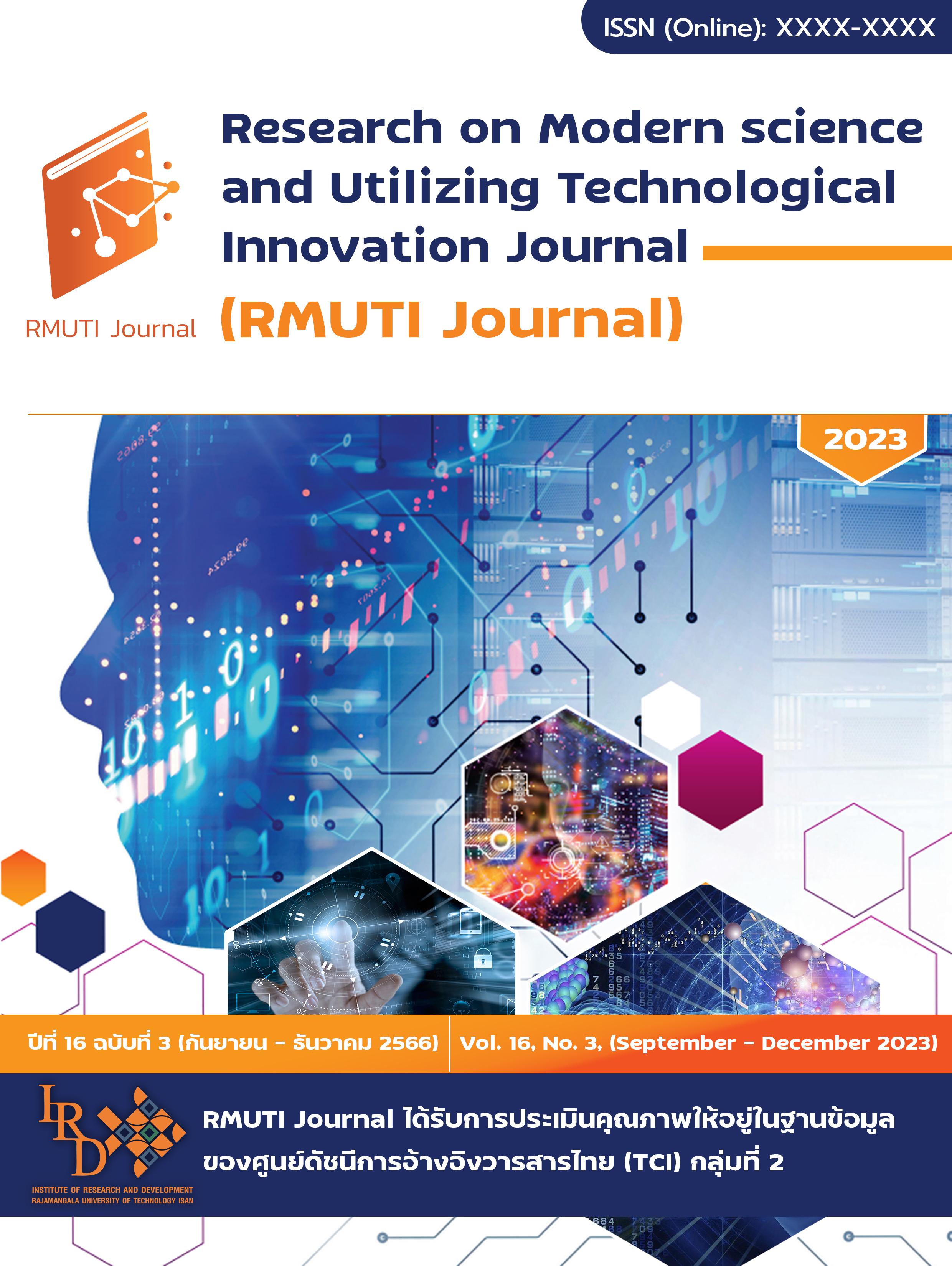The Development of Wine Using Mint Leaves Toward Consumer Acceptance
Main Article Content
Abstract
The objective of this study was to develop formulations and flavors of wine fermented with mint leaves to meet consumer preferences. The experiment was divided into two phases. In the first phase, suitable fermentation conditions for wine production were investigated. The experimental design was created using a Central Composite Design (CCD) from the Response Surface Methodology (RSM) software. Two independent variables were studied: sugar content (oBrix) and fresh mint leaves weight (g/600 ml). Two levels, low (-1) and high (+1), were defined for each factor using a two-level factorial design. A total of 14 experimental sets were conducted, and various parameters were measured every 3 days for 15 days. Sample 4, which used 75 g of fresh mint leaves and started with a sugar content of 22 oBrix, exhibited the highest alcohol content at 9.15 % and 10 oBrix. Sample 4 was therefore deemed suitable for further investigation in phase 2, which focused on studying the sensory acceptance of consumers towards wine fermented for 0 - 2 weeks and had its sugar content adjusted to 10, 12, 14, and 16 oBrix after 2 weeks of fermentation. The samples that underwent a 2-week fermentation period and had their sugar content adjusted to 12 oBrix showed the highest overall preference scores.
Article Details

This work is licensed under a Creative Commons Attribution-NonCommercial-NoDerivatives 4.0 International License.
References
Vutikorn, S. (2021). COVID-19 scouge & restaurant closed but why Penfolds sell wine morethan 82%. Access (29 January 2023). Available (http://Brandage.com)
TISI. (2002). Thai Alcohol Beverage Standard. Thai Industrial Standards Institute Ministry of Industry Journal. Vol. 327, pp. 1-16
Surojanametakul, V. and Karuwanna, P. (2000). IFRPD research report 1996-1999. Wine Production from Herbal Plants. Kasetsart Univ., Bangkok (Thailand). Institute of Food Research and Product Development. pp. 1-11 (in Thai)
Thai Community Pproduct Standards. (2003). Herbal Wine. Thai Community Product Standards 31/2546. Thai Industrial Standards Institute Ministry of Industry. Bangkok Thailand (in Thai)
Tungsong. (2022). Mint. Access (29 January 2023). Available (http://tungsong.com) (in Thai)
Wikipedia. (2022). Mint. Access (29 January 2023). Available (http://wikipedia.com) (in Thai)
Karuwanna, P. (2001). Wine Production from Herb. Food. Vol. 31, No. 2, pp. 80-84 (in Thai)
Picard, M., Franc, C., Revel, G., and Marchand, S. (2018). Dual Solid-Phase and Stir Bar Sorptive Extraction Combined with Gas Chromatography-Mass Spectrometry Analysis Provides a Suitable tool for Assaying Limonene-Derived Mint Aroma Compounds in Red Wine. Analytica Chimica Acta. Vol. 1001, pp. 168-178. DOI: 10.1016/j.aca.2017.11.074
Martín-Garcia, A., Abarca-Rivas, C. Riu-Aumatell, M., and López-Tamames, E. (2023). Comparison of Volatile Compounds During Biological Ageing and Commercial Storage of Cava (Spanish Sparkling Wine): The role of lees. Heliyon. Vol. 9, Issue 8, e19306. DOI: 10.1016/j.heliyon.2023.e19306
Ragole-Riverside, M. (2022). Measuring Brix in Fermentation. Access (18 September 2023). Available (https://winemakermag.com/wine-wizard/wine-wizard-3-3#:~:text=Typical%20starting%20degrees%20Brix%20would,(or%201.106%20specific%20gravity)).
RMUTSV. (2022). Sweetness of Fruit Juice Adjust by Piason Square. Access (29 January 2023). Available (http://agro-industry.rmutsv.ac.th/agro/alcoholic/unit4/pearson.htm)
Samuppito, J. (2022). Total acidity determination. Food analysis. Vol. 2022. pp. 1-3
Chidi, B. S., Bauer, F. F., and Rossouw, D. (2018). Organic Acid Metabolism and the Impact of Fermentation Practices on Wine Acidity: A Review. South African Journal of Enology and Viticulture. Vol. 39, No. 2, DOI: 10.21548/39-2-3164
Viboonpong, A., Sriboonjitta, S., Teerakul, N., Khantongthong, P., and Kramol, P. (2003). Wine Consumer Behavior and Attitude of Local Wine in Middle Market. Economics Journal. Vol. 7, No. 2, pp. 19-33


